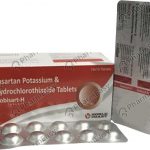
Contents
- 1 Migraine vs. Headache: Distinguishing the Two
- 1.0.1 Differentiating Migraine from Other Types of Headaches
- 1.0.2 Similarities and Differences in Symptoms between Migraines and Headaches
- 1.0.3 The Underlying Causes of Migraines vs. Headaches
- 1.0.4 Differences in Triggers for Migraines vs. Headaches
- 1.0.5 Diagnosing Migraines vs. Headaches
- 1.0.6 Differences and Similarities in Treatment Approaches for Migraines vs. Headaches
- 1.0.7 Additional Resources on Migraines and Headaches
- 1.0.8 Foods That Can Help Reduce Migraine Frequency
- 1.0.9 Home Remedies and Essential Oils for Migraine and Headache Pain Relief
- 1.0.10 Is There a Cure for Migraines and Headaches?
Migraine vs. Headache: Distinguishing the Two
Migraine and tension headaches share similarities in terms of the level of pain, which can range from mild to severe. Both types of headaches can occur on one side or both sides of the head.
However, there are distinct differences between migraine and tension headaches. Migraine pain is often described as throbbing, and even gentle physical activity can worsen the pain for many individuals.
In contrast, tension headaches are more chronic and constant. People with tension headaches often experience a tight band-like pressure around the head.
If you experience a headache that is noticeably different in quality or severity from your usual headaches, or if it is accompanied by unusual symptoms or an elevated temperature, seek immediate medical evaluation to rule out serious underlying causes.
Differentiating Migraine from Other Types of Headaches
Headaches are a common ailment that healthcare professionals frequently encounter. While many individuals may use the term "migraine" to refer to any moderate to severe headache, specific criteria exist for identifying migraine, tension, and other less common headache types. Although headaches can be painful and bothersome, they generally pose little risk to patients.
- Tension headaches, also known as tension-type headaches, are the most prevalent form of headache. Most people experience a tension headache at some point in their lives.
- Migraine headaches are also common but occur less frequently than tension headaches. The pain associated with migraines is different and can help differentiate it from tension headaches.
- Cluster headaches, chronic daily headaches, and medication overuse headaches are much less common than tension and migraine headaches.
Migraine headaches have distinctive characteristics that aid in diagnosis. The most prevalent types are migraines with or without aura. An aura refers to neurological symptoms, such as changes in vision, numbness or tingling, or difficulty speaking, that precede the onset of the headache.
While people often use the term "migraine" to describe any moderate to severe headache, specific criteria must be met to arrive at a migraine diagnosis.
QUESTION
Similarities and Differences in Symptoms between Migraines and Headaches
The only similarity between migraines and headaches is the presence of pain. Headaches can onset gradually or suddenly.
Migraines differ from other headaches because they may be accompanied by symptoms such as:
- Nausea or vomiting
- Sensitivity to light, sound, or smells
- Aggravation of the headache with slight physical exertion
These symptoms are commonly associated with acute migraine attacks.
Tension headaches often involve tenderness of the muscles in the head, neck, and shoulders. They do not worsen with physical activity, and there are no sensitivities to light, sound, or smells.
The Underlying Causes of Migraines vs. Headaches
Doctors believe migraines are caused by changes in blood flow in specific areas of the brain, which in turn affect the blood vessels in that region. Chemical reactions can cause swelling and irritation of the blood vessels, leading to the characteristic throbbing pain of migraines.
The precise cause of tension headaches remains unknown. While chronic muscle tension was once believed to be the root cause, recent evidence suggests a more complex combination of factors is involved.
Migraine Treatments:
Exploring Other Options
Differences in Triggers for Migraines vs. Headaches
Several common triggers can induce migraines:
- Foods such as red wine, chocolate, peanut butter, dairy products, and citrus fruits
- Hormonal fluctuations associated with menstrual cycles or pregnancy
- Weather changes
- Particular odors
- Lack of sleep
- Gluten, a potential trigger for individuals with celiac disease. Consider eliminating gluten from your diet and keeping a log to identify potential triggers.
Stress and muscle tension in the neck or scalp are often associated with tension headaches.
Diagnosing Migraines vs. Headaches
While specific tests do not exist to diagnose migraines, doctors may order tests to rule out other conditions or underlying factors contributing to your headaches. These tests may include blood work or various brain imaging techniques, such as a CAT scan or MRI. In rare cases, a spinal tap may be necessary to exclude serious causes of severe headaches.
Consulting a healthcare professional experienced in headache diagnosis is crucial for determining the type of headaches you are experiencing. Sinus headaches, for example, which can be mistaken for migraines, share some signs and symptoms.
Monitoring the duration of your headaches can provide valuable insights into their type. Migraine headaches last anywhere from a few hours to three days, while tension headaches typically last between 30 minutes and a week.
- Keep a headache diary to identify triggers leading up to your headaches, such as menstrual cycles, hormonal treatments, or alcohol consumption.
- Take note of when your headaches start, their severity, associated symptoms, duration, and any medications you have taken.
- If there is no clear cause for your headaches, maintain a diet diary and record any foods or drinks you consumed before a headache for possible trigger identification.
By clicking Submit, I agree to the MedicineNet’s Terms & Conditions & Privacy Policy and understand that I may opt out of MedicineNet’s subscriptions at any time.
Differences and Similarities in Treatment Approaches for Migraines vs. Headaches
Migraine treatments typically focus on reducing inflammation and alleviating swelling in the blood vessels, which helps alleviate migraine pain.
Triptans are a class of drugs that effectively reduce inflammation and decrease vessel swelling, resulting in relatively rapid relief from head pain. Many of these medications can also alleviate associated symptoms such as nausea, light sensitivity, and sound sensitivity that accompany migraines. Triptans are available in the form of pills, nasal sprays, or injections.
Botox®, an approved treatment for chronic migraines (occurring on more than 15 days per month), can help reduce the frequency and severity of migraines. This treatment has not been proven effective for other types of frequent headaches. Aimovig (erenumab), a monthly injection that falls into a new category of drugs called calcitonin gene-related peptide receptor (CGRP-R) antagonists, was approved in 2018 for the preventive treatment of migraines.
Additional Resources on Migraines and Headaches
- How I Overcame Migraine Pain and Found Serenity
- Tips for Managing Migraine Triggers
- Botox Injections for Migraine Treatment
Featured Centers
- What Are the Best PsA Treatments for You?
- Understanding Biologics
- 10 Things People With Depression Wish You Knew
Foods That Can Help Reduce Migraine Frequency
Avoiding trigger foods can help some individuals with frequent migraines find relief. Others may benefit from consuming foods high in magnesium, riboflavin, and omega-3 fatty acids, such as spinach, whole grains or enriched bread, almonds, and salmon.
Home Remedies and Essential Oils for Migraine and Headache Pain Relief
Essential oils, such as lavender and peppermint, are often used as home remedies to alleviate migraines and other headaches. Some individuals find relief through aromatherapy or by applying these oils directly to the scalp. Other home remedies include basil oil, feverfew, buckwheat, and flaxseed. It is advisable to consult with a doctor before using any home remedies.
Is There a Cure for Migraines and Headaches?
Migraine and tension headaches can occur frequently, even on a daily basis. If you experience a headache for at least 15 days each month, your doctor may recommend daily medication. Treatment options may include:
- Antidepressants
- Anti-seizure medications
- Specific muscle relaxants, depending on the underlying cause of the headache
- Botox® injections for chronic migraine headaches
Patients with migraines often respond well to therapeutic interventions, and their prognosis is generally positive, similar to patients with other types of headaches.
While it may be tempting to treat headaches at home, repeated or excessive use of medication can lead to the development of a condition known as Medication Overuse Headache, which, in turn, can result in daily headaches.
If you experience frequent headaches or head pain, it is important to seek appropriate evaluation and treatment. Healthcare professionals who specialize in identifying different types of headaches, such as internal medicine specialists, neurologists, or allergists, can help determine the cause of your headaches.
Headache Classification Committee of the International Headache Society. The International Classification of Headache Disorders, 3rd edition. Cephalalgia 2013, 33:629.
Steiner, TJ, et al. Guidelines for All Healthcare Professionals in the Diagnosis and Management of Migraine, Tension-Type, Cluster, and Medication-Overuse Headache. 3rd edition. British Association for the Study of Headache. 18 Jan 2007.
Steiner TJ, et al. The Global Campaign, World Health Organization, and Lifting The Burden: collaboration in action. J Headache Pain. 2011;14(3):273–274. doi: 10.1007/s10194-011-0342-4


